Cycling safety instructor back on the bike after road rage incident – BikePortland
This is a guest article written by Raymond Rendleman.
Ten days.
That’s how long it took before Portlander Vivek Jeevan was able to ride again and recover enough from the trauma of being intentionally hit by a road-raging driver last month.
Jeevan said he considers himself relatively fortunate. While he has heard from cyclists who get back behind their handlebars the day after a crash, he knows it’s common for a month or more to pass before trying again. And some never do. What keeps his dedication to road safety going, as education coordinator for nonprofit BikeLoud PDX and a certified League Cycling Instructor, are those who will never ride again.
“As part of my advocacy, we’ve supported victim families through court cases and seen a parent in front of a judge yell at a driver for killing their kid,” he shared with me in a recent interview. “I wanted to ask the perpetrator, ‘Was trying to save a few seconds on the road worth all of this?’”
Following his harrowing experience on June 2, he has had a grim realization about the frequency of incidents citywide where reckless drivers get away without consequences for intentionally targeting people riding bikes.
“Since that (BikePortland) article came out, people would approach me on rides — people I know and don’t know — and they would share their own story of getting hit and/or police not caring about them,” he said.
“I wanted to ask the perpetrator, ‘Was trying to save a few seconds on the road worth all of this?’”
Jeevan isn’t just relying on peoples’ stories. As perhaps America’s most prolific author of studies of behavioral causes of fatal bicycle and pedestrian collisions, he’s seen Portland Police reports reveal that a driver and a cyclist collide on average every three days during peak riding season, and every five days during the rainy months.
“Every three days — that’s so much suffering happens on our roads,” he said.
Jeevan’s brush with an angry driver and disappointing treatment by the responding police officer have given him a new perspective and appreciation for the topic he’s devoted years of advocacy to.
Jeevan doesn’t know exactly what it will take to change the culture on Portland streets, but he’s decided it’s time to get back to riding. Jeevan has resumed his regular schedule of teaching classes via his Portland Bicycle School service. He also led a Bike Safety Trivia ride on July 9th.
During the class, he reviewed the top causes of bicycle crashes, including the right hook, where a driver turning right through a bike lane hits someone proceeding straight. He cited an ODOT-funded Oregon State University study showing that 66% of drivers don’t look at the bike lane, even though drivers are legally required to yield.
“As cyclists it’s important to understand that two thirds of drivers will never check the bike lane before turning,” he said.
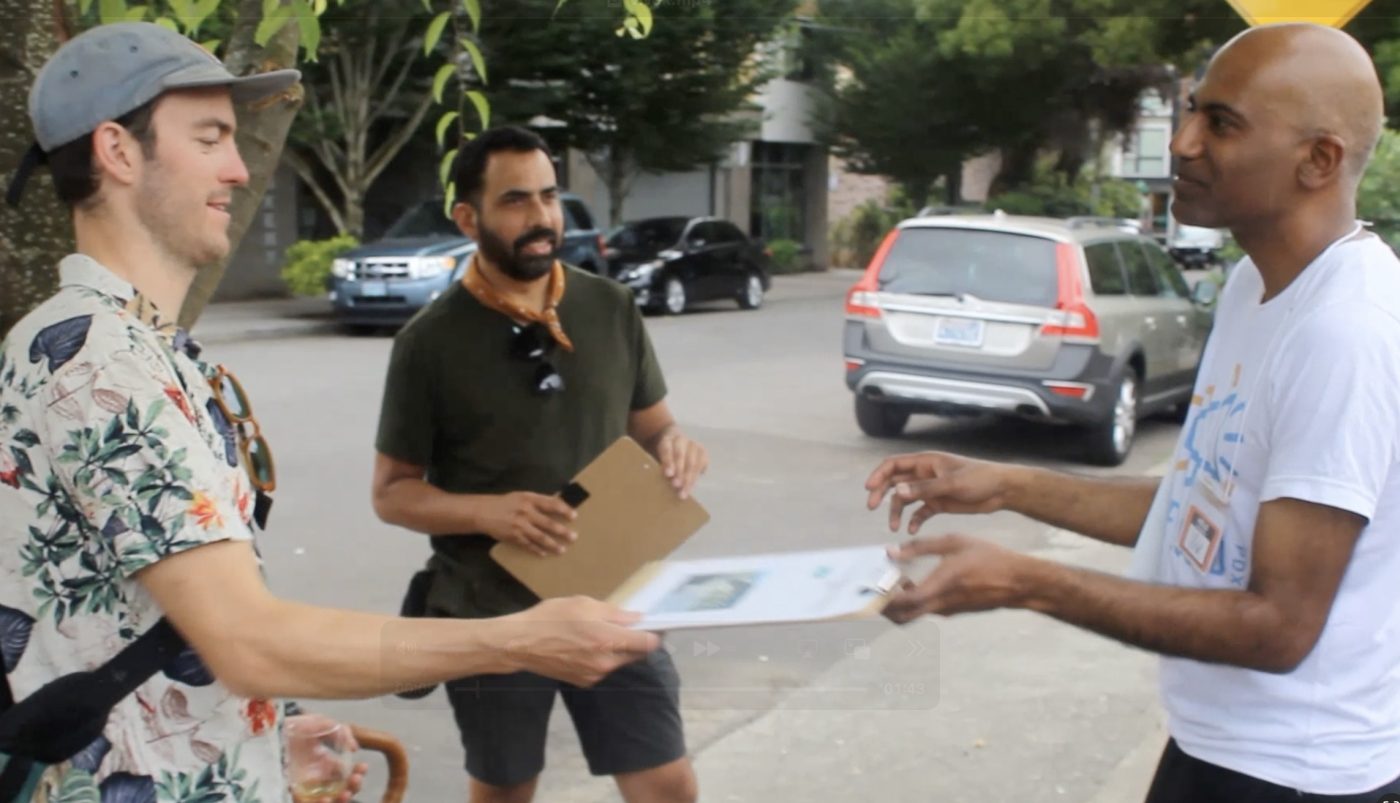
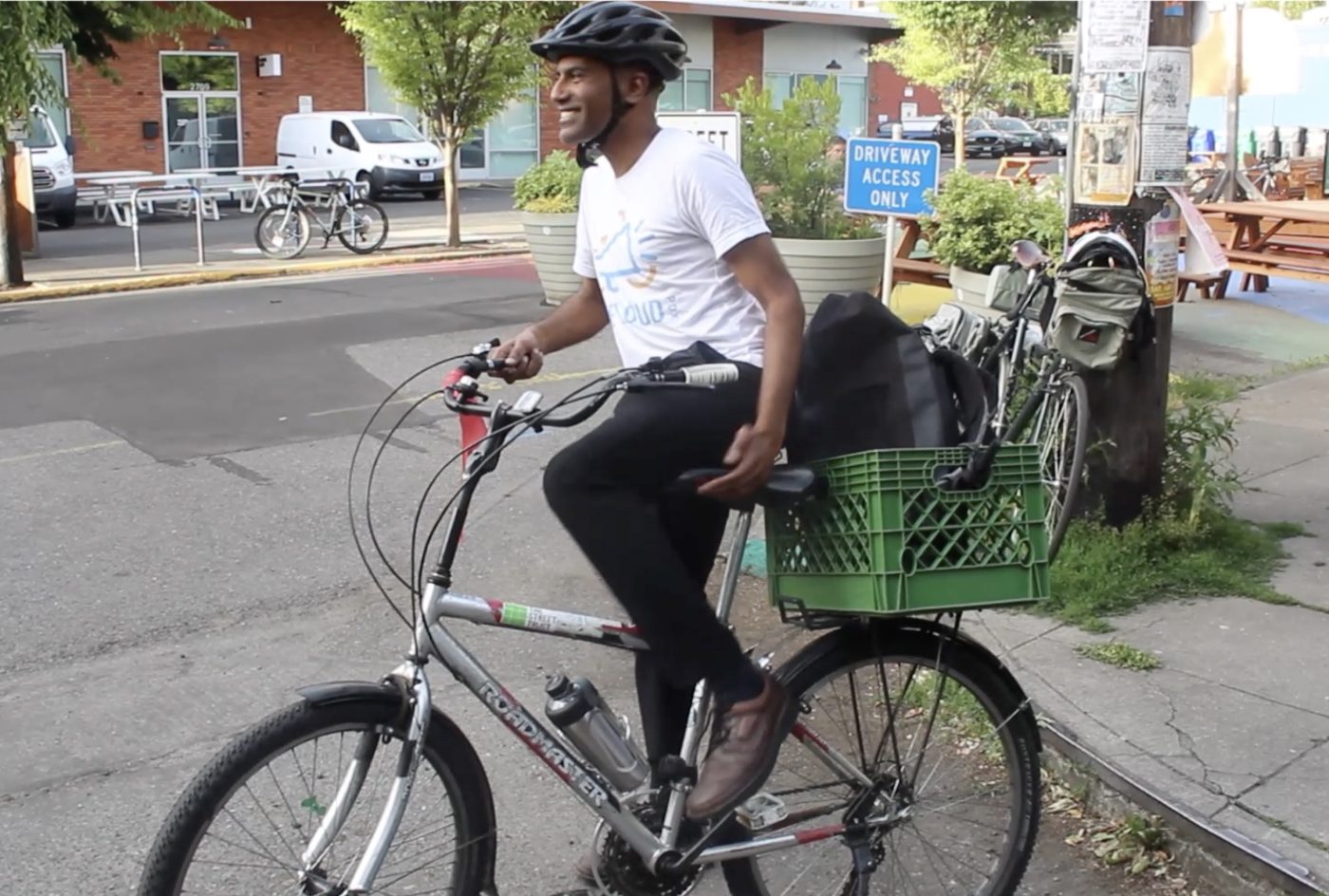
At this point in the class, a BikeLoud volunteer shared her own experience that drivers’ disabilities might be an additional factor on top of their general indifference to cyclists. “Lady Max,” who is legally blind and declined to provide her full name to BikePortland, said she gave up her driver’s license at the age of 48, when she learned to ride a bike for the first time. She said that the state could be doing more to prevent dangerous drivers such as herself from being behind 2,000-pound vehicles.
“I probably could have passed the driving exam because ODOT doesn’t give you a time limit to do the vision test,” she said.
Jeevan also covered the most common way for drivers to kill cyclists—unsafe passing—which was how he was intentionally hit in June. He reminded drivers at the class that it only delays you on average 20 seconds in the city to conduct a proper pass.
“Drivers can get grumpy when I say this, because it means that they have to slow down,” he said. “The situation will resolve itself quickly.”
Jeevan reminded everyone that slow and stopped traffic is normal and reasonable in every scenario and on every road. He said that “One road, many users” is a phrase for the variety of transportation forms allowed on Oregon roads — all of varying sizes and speeds.
And until Oregon repeals its mandatory bike-lane use law (something Jeevan once tried to make happen himself), he’ll continue to educate both bike and car users about how exceptions in the law allow cyclists to use the full traffic lane for their own safety.
“It might sound counterintuitive; but when you ride in middle of the lane, drivers tend to give you more space. And if they do try to pass too closely, riding in the middle allows you an escape route on the right,” he said.
Jeevan includes nuggets like that in his nine-hour bicycle class, which, similar to Drivers Ed, consists of parking lot drills, riding around town with an instructor, and a classroom discussion of laws and safety.
The number-one cause of cyclist deaths, Jeevan tells his students, is drivers splitting a lane to get around bicycle riders.
“Even though it’s legal to lane split in a car, it’s still deadly. As a traffic instructor, I stress universal best practices and hazard avoidance maneuvers, over local laws that vary,” he said. “This is trying to save seconds when there could be a lifetime of life lost to complete a dangerous maneuver.”
With evening coming and the class ending in the Ankeny Rainbow Road Plaza, it was time for everyone to bike home. Jeevan buckled his helmet, swiveled his head to check for traffic, put out his arm to signal, then headed west on Ankeny Street to downtown — right in the middle of the lane.
— Raymond Rendleman, rendleman@gmail.com
Share this content:
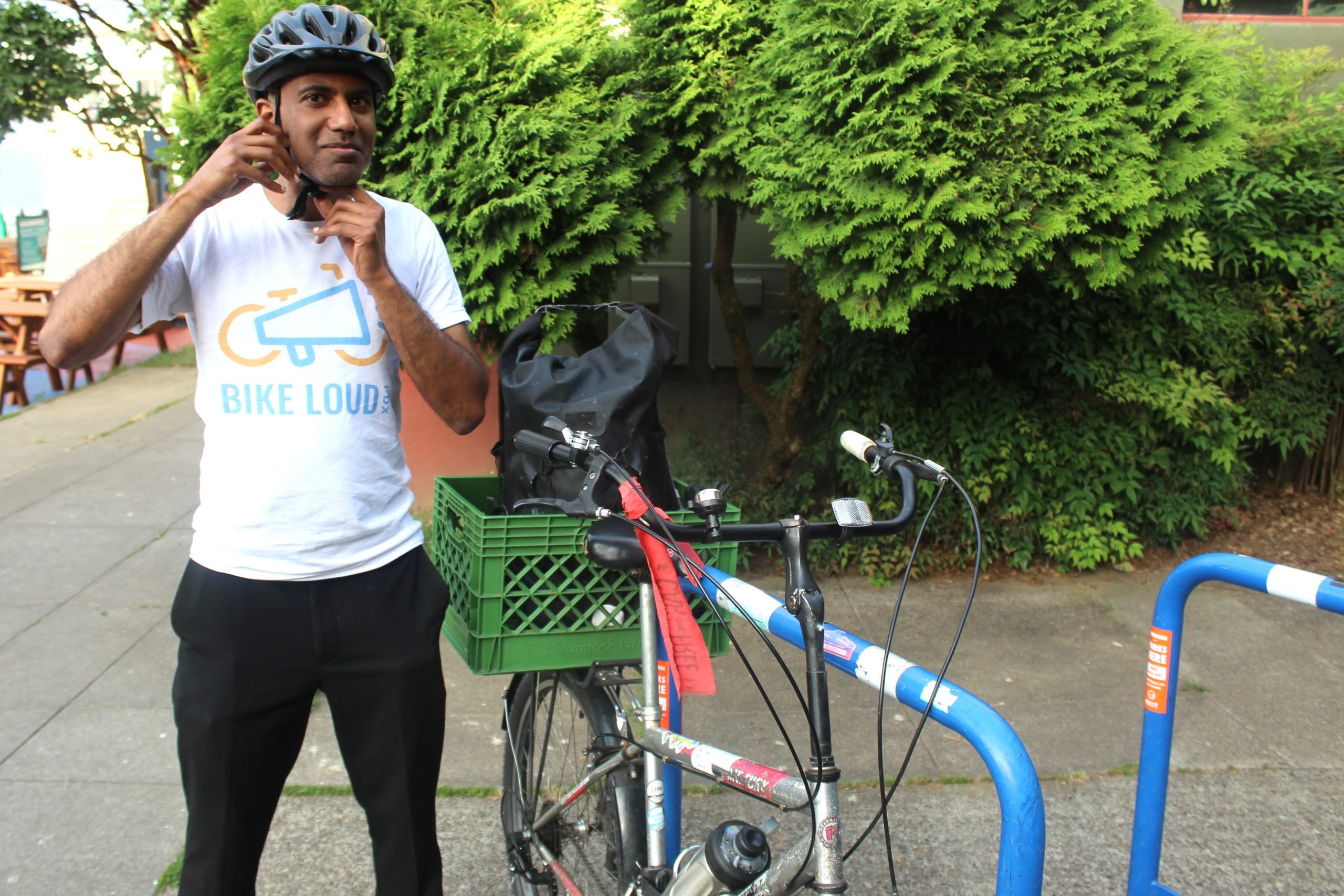
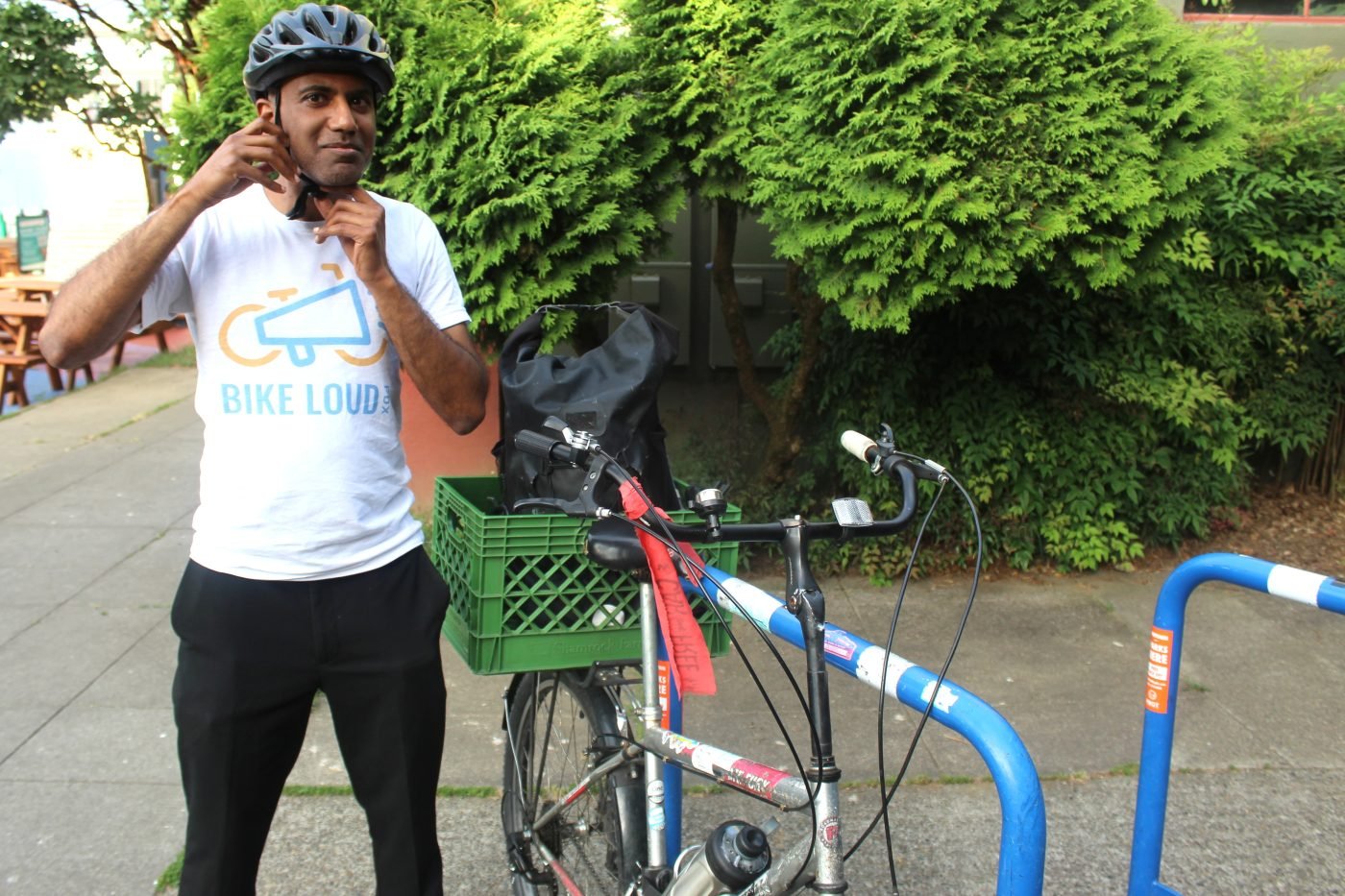

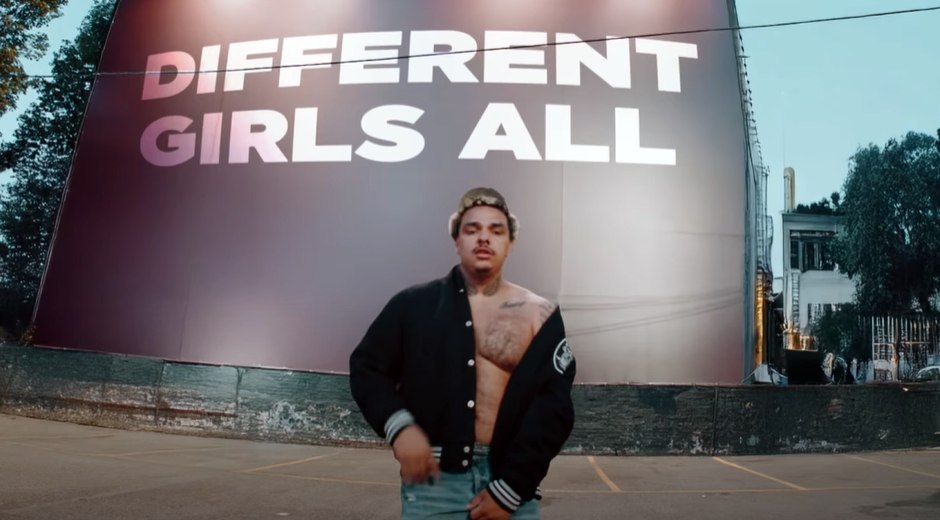










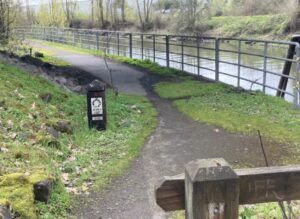
Post Comment